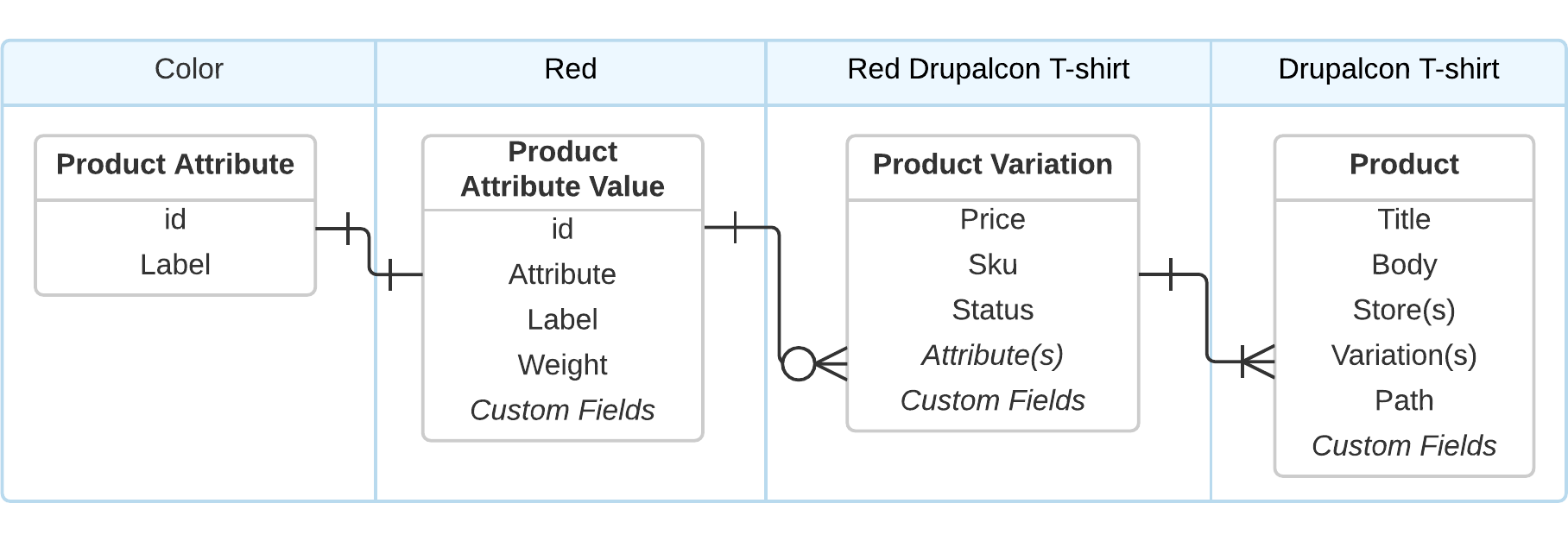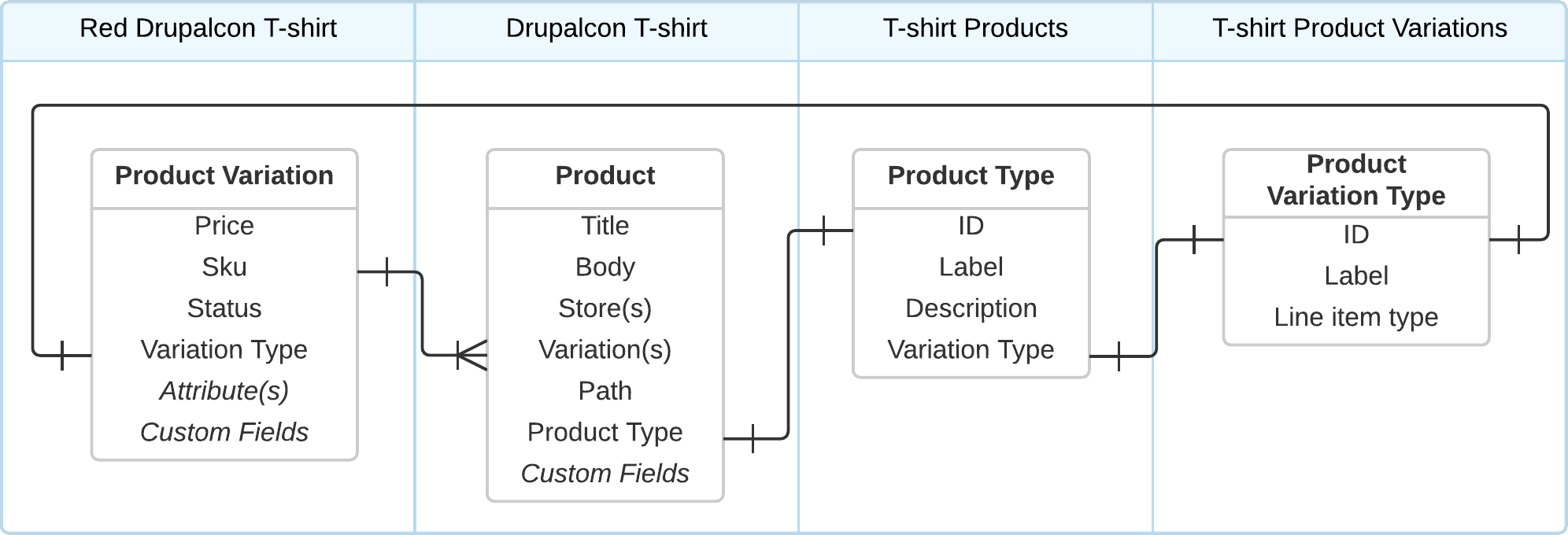Relationship diagrams
Drupal Commerce has many models and relationships. This page provides explainations as to how these different models related, including entity relationship diagrams.
Full ERD: https://www.dx-experts.nl/blog/2017/commerce-2-entity-relations-including-shipping/

Orders will only ever have one store, and it is stored as an entity attribute.
- Carts (which are Orders with additional functionality) can only contain products from one store.
- You can use this architecture to limit which products can be put into carts together, based on physical location or for billing/taxes purposes.
Products, by default, have an entity reference field that targets stores and allows one or more stores to be selected.
Stores are fieldable content entities (not configuration entities) that contain a lot of information about the physical location of the merchant. By default stores collect the following:
- Name
- Email Address
- Default Currency
- Address (used for determining taxes)
- Supported billing countries
- Owner
- Default status (used to select a store when one isn’t given)
- Tax information

